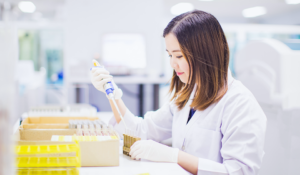
A large area of cure-based T1D research is investigating stem cell-based therapy. The goal of this approach is to use stem cells as a renewable source of insulin-producing cells which, when transplanted, would replace beta cells that are destroyed in a person with T1D, thereby allowing them to produce insulin again. This would lessen or eliminate the amount of external insulin required by someone living with T1D (either by injection, pen, or pump) for months or even decades.
Vertex had two active clinical trials for type 1 diabetes cell therapy: VX-880 (FORWARD) and VX-264 (UPWARD). On Friday, Vertex published a press release with updates on its type 1 diabetes (T1D) products.
After review, Vertex will not be moving forward with the clinical development program for VX-264. VX-264 was Vertex’s encapsulated islet cell therapy that does not require immunosuppressive drugs. And while it was generally safe and well-tolerated in clinical trials, it did not meet the efficacy endpoint as measured by C-peptide, a biomarker for insulin levels. What this means is that implanted cells were not producing enough insulin to warrant moving forward with further trials. Currently, C-peptide is our best measurement for determining if insulin is being produced in humans.
In VX-264, the insulin-producing cells were placed in a protective device and then implanted into the body. Analysis of the encapsulation devices is ongoing and may inform future strategies and approaches.
The VX-880 product has been renamed to zimislecel. This trial is continuing as planned, and regulatory submission is expected in 2026. The Phase 1/2/3 pivotal trial for zimislecel is continuing and on schedule for enrollment and dosing. Zimislecel is Vertex’s cell therapy for individuals with severe hypoglycemic (low blood glucose) events. It requires the use of immunosuppressives.
Results from the ongoing trial with VX-880 have demonstrated promising efficacy and safety in all people who received the treatment. Vertex has been working closely with regulators around the world to prepare for submission and is expanding its manufacturing and commercial capabilities to ensure they are prepared for the launch of the drug.
Vertex remains committed to pursuing therapies that could provide “transformational benefits” to the T1D community and is looking at other ways to keep cells safe without the use of standard immunosuppression. These include alternative immunosuppressive regimens, gene-edited hypo-immune manufactured islet cell therapies, and novel devices to encapsulate islet cells.
There is still currently no manufactured cell therapy that is approved for people with T1D. But it is very encouraging that Vertex is preparing to submit for regulatory approval next calendar year and getting ready for the commercial launch.
Developing cell therapies that restore insulin production without the use of standard immune suppression is the focus of Breakthrough T1D’s cell therapies portfolio and is a key focus of our funding strategy.
The discontinuation of VX-264 emphasizes the importance of Breakthrough T1D’s global approach to pursuing multiple strategies to keep cells safe without traditional immune suppression, including those that Vertex is employing.
What does this mean for Canadians with T1D?
For cell therapy to be broadly accessible to people with T1D, the cell product needs to both work and function without or with minimal immunosuppressive therapies. Part of the research process is pivoting and adjusting based on results and moving in new directions to achieve the end goal – in this case – cell therapies that are safe, well-tolerated and ideally don’t require immune suppression.
Breakthrough T1D Canada will continue to monitor results and provide updates as they are made public.



